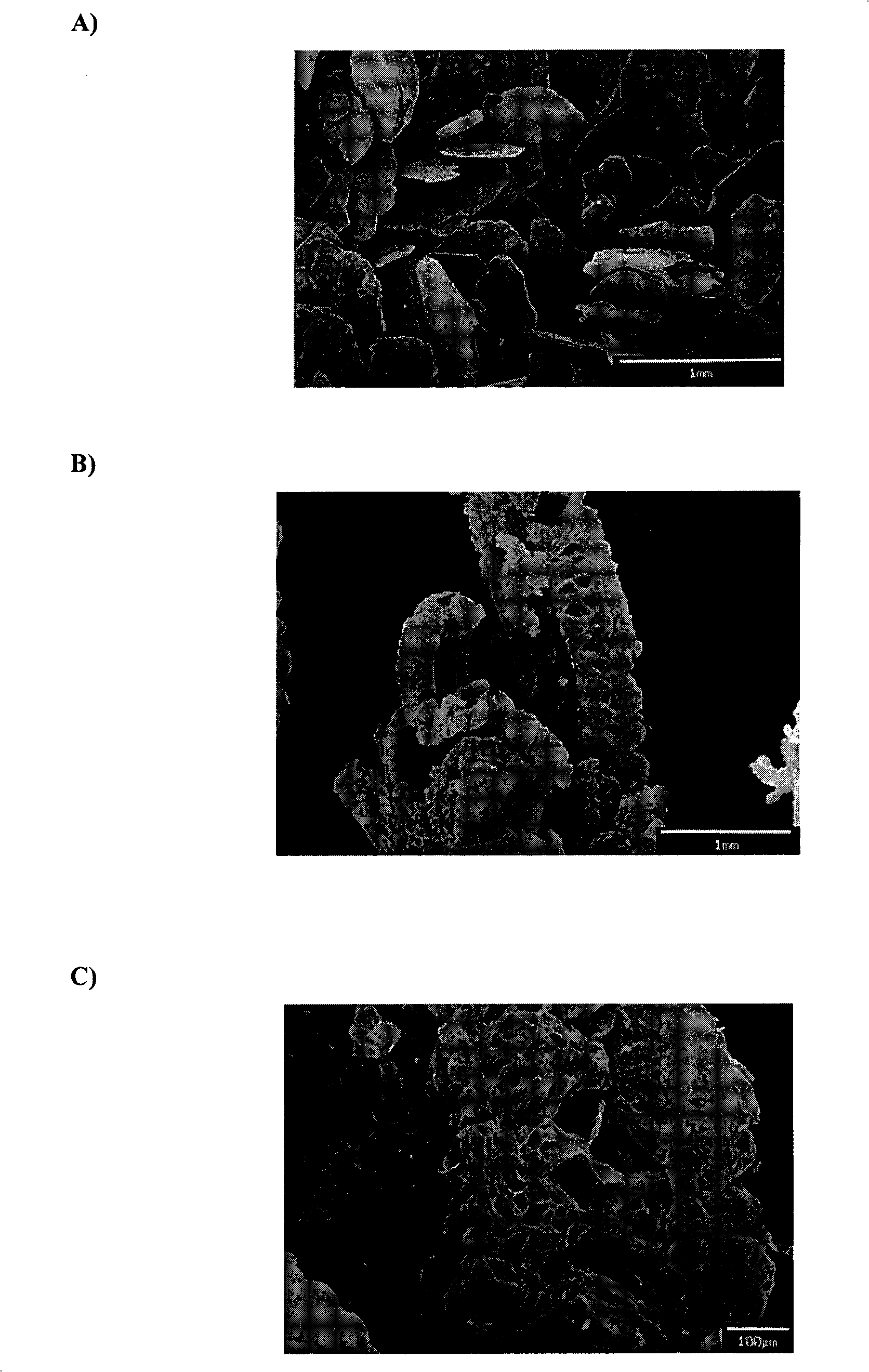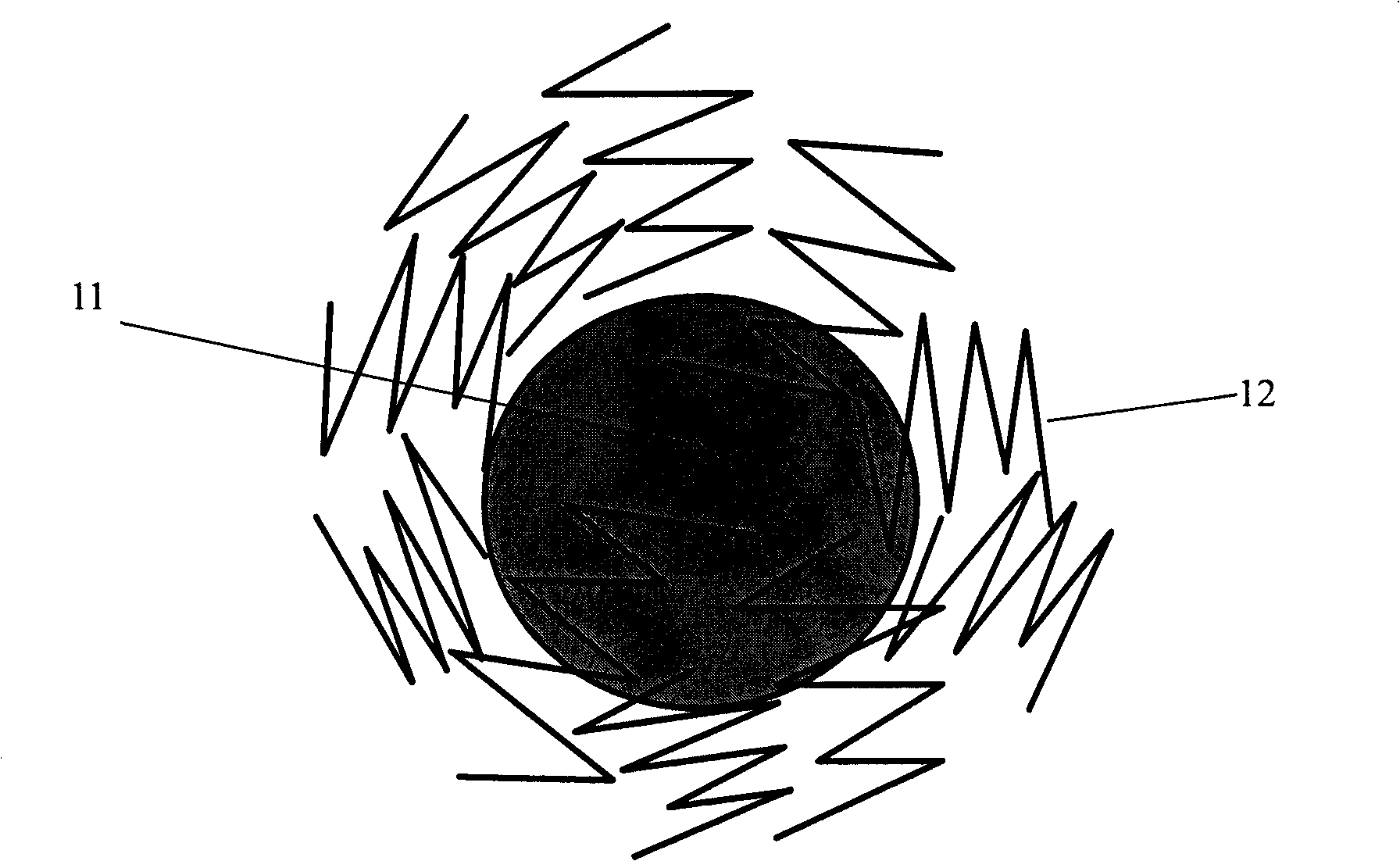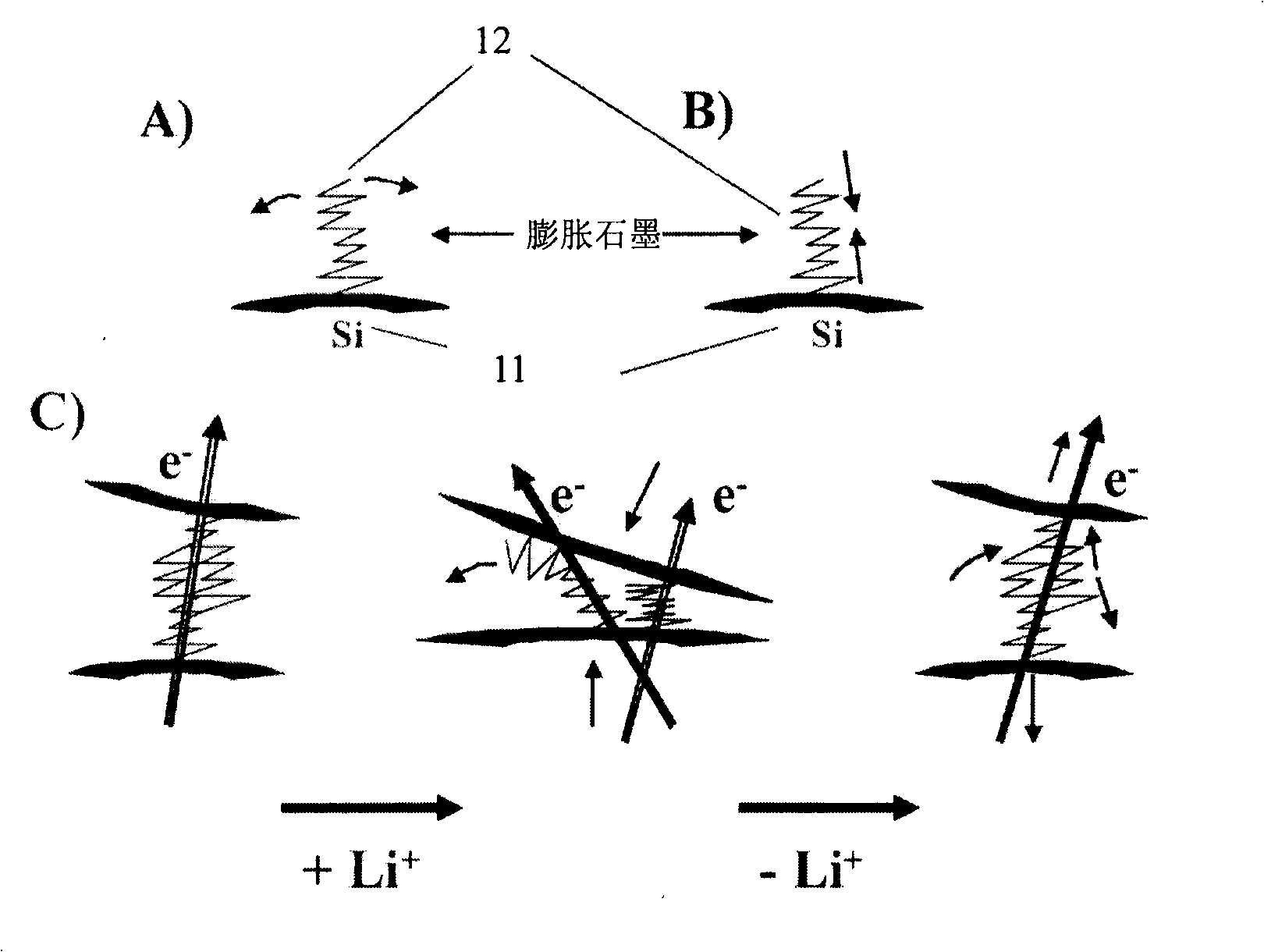Secondary battery material
A technology of carbon materials and negative electrode materials, applied in the field of secondary battery materials, can solve problems such as limiting the maximum capacity of lithium-ion batteries
- Summary
- Abstract
- Description
- Claims
- Application Information
AI Technical Summary
Problems solved by technology
Method used
Image
Examples
Embodiment 1
[0066] Expanded graphite-silicon composites with added pre-intercalated graphite
[0067] Expanded graphite-silicon composites were prepared using pre-expanded graphite by a conventional solid-state method. Silicon powder (Si, Aldrich, <30 μm) and carbon pitch powder (CP) were pre-mixed for 12 hours with specific weight ratios, respectively 88% Si and 12% CP, and 92% Si and 8% CP (Wheaton Modular Cell Production Roller Apparatus, Model III).
[0068] The above mixture was further divided into two groups and mixed with expanded graphite (EG, Asbury) in the following weight ratios, 10% EG and 3% EG (each relative to 100% by weight of Si-CP mixture). These four final Si-CP-EG mixtures (see Table 1 for details of samples 1-4) were held for 1 hour, i.e., (88% Si-12% CP) 3% EG, (88% Si -12% CP) 10% EG, (92% Si-8% CP) 3% EG, and (92% Si-8% CP) 10% EG. This step is called one-step firing.
[0069] The above calcined material was passed through a 53-90 μm sieve (Octagon 200 Test Si...
Embodiment 2
[0071] Expanded graphite silicon composites with added pre-expanded graphite
[0072] The expanded graphite-silicon composite material using pre-expanded graphite was prepared by a conventional solid-state method. Silicon powder (Si, Aldrich, <30 μm) and carbon pitch powder (CP) were premixed for 12 hours at specific weight percentages, 88% Si and 12% CP, and 92% Si and 8% CP, respectively (Wheaton Modular Cell Production Roller Apparatus, Model III).
[0073] Each of the above premixed Si-CPs was subjected to the first firing in Ar gas under the condition that the heating rate was increased from room temperature to 400 °C at a rate of 2 °C / min and kept for 1 h, and then cooled to room temperature. The preheated mixture of each Si-CP mixture was divided into two groups and then mixed with expanded graphite (EG) at the same weight percent of EG as the one-step fired sample in Example 1. These four Si-CP-EG mixtures (see Table 1 for details of samples 5-8) were subjected to fi...
Embodiment 3
[0078] Expanded graphite-silicon composites with added pre-intercalated graphite
[0079] Expanded graphite silicon composites were prepared using intercalated graphite by the same method as the solid phase method described in Example 1.
[0080] Silicon powder (Si, Alfa Aesar, 0.05–5 μm), pre-intercalated graphite (IG, Asbury) and carbon pitch powder (CP) were mixed for 12 hours at specific weight percentages, namely 92% Si, 8% CP and 10% IG, wherein the total weight of Si and CP is 100% (Wheaton Modular Cell Production Roller Apparatus, Model III). Then, the above-mentioned mixed mixture was divided into three groups, and preheated respectively under the condition that the heating rate was increased from room temperature to 300, 350, and 400° C. (respectively marked as sample 9, sample 10) at a rate of 4° C. / min. and sample 11), then cooled to room temperature. Then, the preheated mixture was subjected to a final calcination under Ar (CM Furnace 1218) gas from room tempera...
PUM
| Property | Measurement | Unit |
|---|---|---|
| melting point | aaaaa | aaaaa |
| diameter | aaaaa | aaaaa |
Abstract
Description
Claims
Application Information
 Login to View More
Login to View More - R&D
- Intellectual Property
- Life Sciences
- Materials
- Tech Scout
- Unparalleled Data Quality
- Higher Quality Content
- 60% Fewer Hallucinations
Browse by: Latest US Patents, China's latest patents, Technical Efficacy Thesaurus, Application Domain, Technology Topic, Popular Technical Reports.
© 2025 PatSnap. All rights reserved.Legal|Privacy policy|Modern Slavery Act Transparency Statement|Sitemap|About US| Contact US: help@patsnap.com



